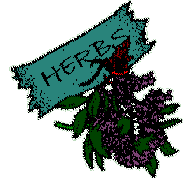 Herbs--M
Herbs--M 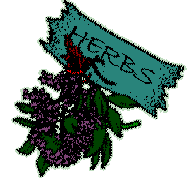
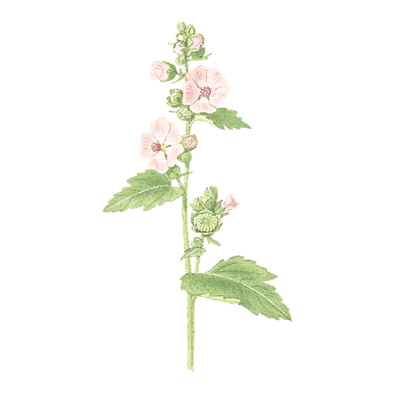 |
Common Names: Mallow, Marsh Mallow Latin Name: Althaea officinalis Parts Used: Roots, leaves, and flowers Cultivation: Mallow is a very hardy perennial which frequently grows wild. It likes moist, light soil with a neutral pH in full sun. Culinary Uses: The mallow root was used to make the French candy, pâté de guimauve, which is the original "marshmallow." The root is also good lightly steamed and then fried with butter and onions. Add the tender young leaves to salads. Magickal Uses:Use a mallow ointment to protect against evil and cast out demons. Place a bouquet of mallow in a vase in your window to attract a straying lover. Medicinal Uses: Mallow is a very soothing demulcent. It can be used internally to soothe digestive upsets and inflammations, or as a cough preparation. Use poultices externally to soothes ulcers, abrasions, and boils. |
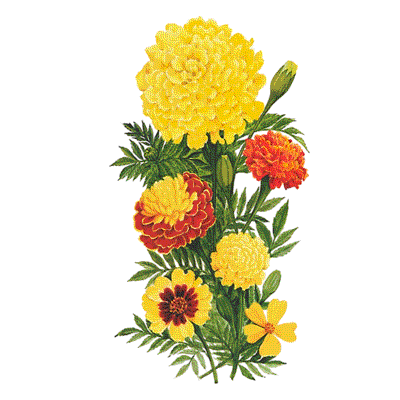 |
Common Names: Marigold Latin Name: Tagetes spp. Parts Used: Cultivation: Marigolds are a half-hardy annual. They should be started, or set out, after all danger of frost has passed. Marigolds prefer full sun in light, well-drained soil. Companion Planting: Marigolds are very useful in the garden. They drive away many insect pests, and a border of them around your veggies is a nice idea. There is also a type of nematocidal marigolds, whose roots excrete a substance that drives away root nematodes. Culinary Uses: Some cultivars, notably the "Gem" series, are edible. The make nice garnishes or additions to salads. Note:There is a big difference between marigold (tagetes spp.) and pot marigold (calendula officinalis) or calendula. Most entries referring to the magickal or medicinal uses of marigolds are actually referring to calendula. Check the Latin names before using any recipes. |
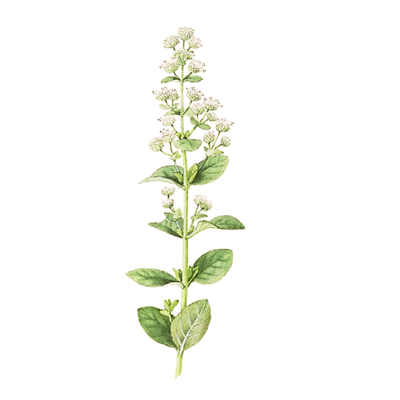 |
Common Names: Marjoram, Pot Marjoram, Sweet Marjoram Latin Name: Origanum majorana Parts Used: Leaves, stalks, and flowers Cultivation: Marjoram is a tender perennial, hardy only to zones 9-10. In the North it is usually grown as an annual. Cosmetic Uses: Marjoram has a mild antiseptic action that can be useful in cleansing baths and facials. Culinary Uses: Marjoram tastes like a milder oregano and can be substituted for it in recipes. It is widely used in French, Italian, and Portuguese cuisines. Magickal Uses: Place marjoram plants around your house to protect it. Use it in love spells, and mix with violets to ward off colds. Medicinal Uses: Try marjoram tea for headaches. Use its antiseptic properties in a gargle to treat mouth ulcers, or to aid in the treatment of external wounds. It is a diaphoretic which can be used in the treatment of colds and flu. Rub marjoram oil into muscle aches and sprains. Note: Marjoram and oregano are members of the same family and can be interchanged, remembering that oregano has a stronger flavor. Cautions: Marjoram can be a uterine irritant and should be used with caution during menstruation or pregnancy. |
 |
Common Names: Mint Latin Name: Mentha spp. Parts Used: Leaves and flowers Cultivation: A perennial hardy to zone 5, mint likes rich, moist, well-drianed soil in full sun to partial shade. When planted outdoors as part of a herb garden, mint should be put in the ground in a container, as it is extremely invasive. Cosmetic Uses: Use an infusion of mint to soothe chapped hands, or as a restorative foot soak. Mint is cleansing and makes a nice addition to facials and baths. Culinary Uses: Mint has many different varieties and flavors, from the old stand-by peppermint to the more exotic pineapple and chocolate mints. Peppermint is excellent for flavoring sweets and candies. Spearmint is milder and is better for other cooking purposes, enhancing meat, fish, and vegetables. Use the specialty mints in salads, fruit dishes, teas, and as a garnish. Magickal Uses: Mint is a versatile healing plant. Use it in healing spells and incenses; stuff sachets with mint leaves to ward off disease. Mint also attracts money; carry a few leaves in your wallet for this purpose. Medicinal Uses: Peppermint is an excellent digestive aid. It is specific for use in treatment of morning sickness and motion sickness. Use it as an inhalant to treat stuffy noses and congestion. It helps relieve the discomfort of painful periods. |
|
Common Names: Mistletoe, Golden Bough, Herb de la Croix Latin Name: Viscum album (European Mistletoe), Phoradendron serotinum Parts Used: Whole plant Cultivation: Mistletoe is generally not cultivated. Look for it growing wild in the woods. Magickal Uses: Mistletoe was revered by the Druids, especially when it was found growing on an oak. Cut it on Midsummer's Day using a golden sickle and don't let it touch the ground. Mistletoe is a potent protective herb, offering protection against almost every misfortune from lightening to disease to having your children stolen by faeries. Kiss your lover under the mistletoe to keep him or her in love with you. Place some mistletoe beneath your pillow to ensure beautiful dreams, or carry some with you if you are trying to conceive. Medicinal Uses: European mistletoe can be used as a treatment for epilepsy. It acts to slow the heartbeat and can be used in cases of tachycardia. It reduces blood pressure and artheriosclerosis, and helps relieve headaches caused by high blood pressure. American mistletoe can cause uterine contractions and is useful in childbirth. Cautions: Mistletoe is extremely toxic. Under no circumstances should you attempt to dose yourself with it. If you use it as a holiday decoration, be careful to hang it out of the reach of children and pets, or consider using one of the many excellent silk replicas available. | |
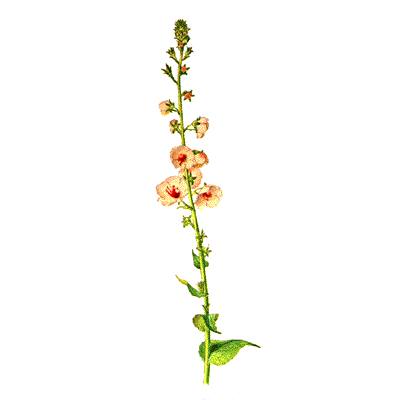 |
Common Names: Mullein, Aaron's Rod, Clot, Doffel, Feltwort Latin Name: Verbascum thapus Parts Used: Leaves, flowers Cultivation: Mullein grows wild; it will grow in just about any soil in sun to part shade. It is a hardy biennial which reseeds readily. Magickal Uses: Use a mullein pillow to guard against nightmares. Carry some as a charm for courage, especially when faced with wild animals. Use powdered mullein leaves as a substitute for graveyard dust in spells. Medicinal Uses: Use a mullein extract in olive oil to treat inflamed skin. It is specific for bronchitis with a hard, sore cough. |
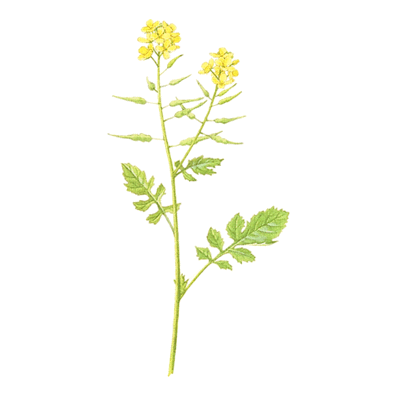 |
Common Names: Mustard Latin Name: Brassica spp. Parts Used: Leaves and seeds Cultivation: Mustard is a hardy annual, growing readily just about anywhere. It reseeds quite happily. Culinary Uses: Use the tender young leaves as a tangy addition to salads. Use the seeds to flavor pickles or chutney, or grind them to make mustard. Magickal Uses: Sprinkle mustard seed on your doorstep to protect your home, or carry some in a red cloth bag to keep you from getting a cold. Medicinal Uses: Used externally, mustard stimulates the circulation and relieves inflammation. Mustard plasters are a time-honored remedy for chest congestion and probably the inspiration for Vix! Taken internally, mustard stimulates the appetite and aids digestion. Large doses can cause vomiting. Cautions: Do not apply the mustard directly to the skin as it is quite irritating and can cause blistering. |
Common Names: Myrrh Latin Name: Commiphora myrrha Parts Used: Resin Cultivation: Myrrh is a small desert tree that grows only in a small area of the Middle East where a certain type of basaltic soil is found. Magickal Uses: Myrrh was used in ritual in ancient Egypt. Moses annointed priests with an ointment that contained myrrh, and the Magi reputedly brought it to Jesus at his birth. Myrrh is a purifyng incense, usually burned with frankincense, and it increases the power of any incense it is burned with. Use it to aid meditation and healing. Medicinal Uses: Myrrh is specific for infections of the mouth and gums, as well as sinusitis and sore throats. Externally it is useful in the healing of wounds. |
| A | B | C | D | E | F | G | H | I | J | K | L | M | N | O | P | Q | R | S | T | U | V | W | X | Y | Z |